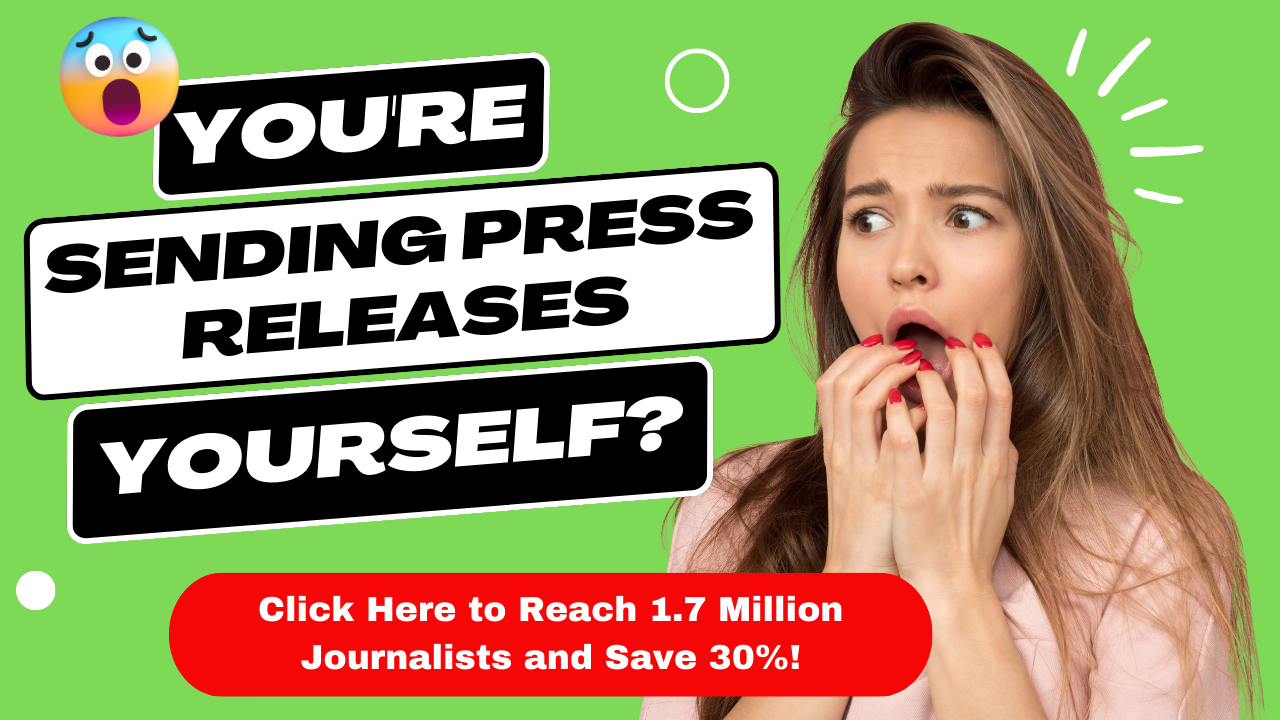
Are you looking to write a press release for your company, but aren’t quite sure how to do it?
A press release can help drive traffic to your website, provide exposure for your business, and get the word out about your products and services. But, in order to reap all of these benefits, your press release needs to be well-crafted.
Check out this guide to learn how to write a press release.
What is a Press Release?
Before we talk about how to write a press release, let’s talk about what exactly a press release is.
A press release (sometimes referred to as a news release) is a document that shares newsworthy information about something your company has done. Press releases are typically sent to editors and journalists who use the information you give them to write a news article.
Typically, a press release is also accompanied by a press release email, in which you pitch your story to a journalist (almost like a cover letter).
How to Write a Press Release
Now that you have a bit of an idea of what a press release is, let’s talk about how to write a press release. Here’s what you need to do:
1. Understand the Format
To write an effective press release, you need to make sure you follow the right format.
If your press release uses the format that a journalist is familiar with, then you’re more likely to get published. Here’s the basic press release format:
- Headline: You need to have a catchy headline that grabs people’s attention
- Location: State where you are and where the story takes place
- Strong Lead: Briefly summarize why your story is newsworthy
- Body: This is the meat and potatoes of what your story is about. It should be skimmable and ordered from most important info to least important info
- Boilerplate: Briefly describe your company
- Contact: The name and contact details of your communications manager or marketing manager (In other words, whoever the reporter can get in touch with for more information)
Following this format will ensure that more journalists read your press release and consider your story.
2. Find Something Newsworthy
In order to write a press release, something newsworthy needs to happen in relation to your company. There are several ways you can provide journalists with the information they want, including:
News Jacking
This is a process in which you inject your brand into the current news cycle to make a story more eye-catching and relevant.
For example, if there’s a viral story circulating Twitter, tying your press release to it can be a great way to get traction.
Exclusive Research or Data
Journalists love exclusive information, especially when it’s backed by hard data and statistics. If you have exclusive research you can give to a news outlet, then you’re well on your way to writing a great press release.
Emotional Connection
Stories that have an emotional connection can help you resonate with your target audience and gain more social traction. When people are emotionally invested in your brand, they’re more likely to do business with you.
3. Write Your Headline
Once you know the story you’re going to pitch, it’s time to write your headline.
This is the first thing the journalist is going to see, so you need to make sure that it’s attention-grabbing. Your headline should be direct and comprehensive, and it should contain action verbs.
4. Write Your Lead
After you’ve written your headline, it’s time to write your lead. This is the first paragraph of your press release, and it’s usually 35 to 45 words long.
The purpose of the lead is to summarize the most important aspects of the press release. In the first paragraph, you want to make sure you answer the 5 “W”s:
- What: What’s the news story about?
- Where: Where does the story take place?
- When: When does the event happen or when is it going to happen?
- Who: Who is involved in the story?
- Why: Why is this information relevant to the leader?
Again, the first paragraph isn’t meant to be exhaustive, so keep your answers short and sweet.
5. Write Your Body Paragraphs
Most press releases contain several body paragraphs. As we mentioned earlier, the body paragraphs are the meat and potatoes of your press relief.
In these paragraphs, you’ll expound upon your 5 Ws. In these paragraphs, you’ll explain the arguments, controversies, issues, evidence, and background information.
To boost the personality and credibility of your press release, it’s also a good idea to include supporting quotes. Make sure the quotes you include are relevant within the context of the article.
6. Write Your Boilerplate Text and Add Contact Details
After you’ve wrapped up the body paragraphs, you’ll need to write your boilerplate text and add in your contact details. The boilerplate text explains what your organization is and what it stands for.
The text involves condensing your company’s goals, facts, and aspirations into one shot paragraph. Some people even choose to include their company logo in their boilerplate text.
You also need to remember to include your media contact information so reporters can get in touch with you. It’s best to include an email and a phone number so they have a couple of different ways to reach you.
Are You Ready to Write Your Press Release?
Now that you know how to write a press release, it’s time to start writing. Pretty soon, your story will be picked up by the press thanks to your awesome press release.
Of course, writing a press release isn’t easy, and a lot of companies get help with their press releases. If you need some help writing your press release, contact us today.
